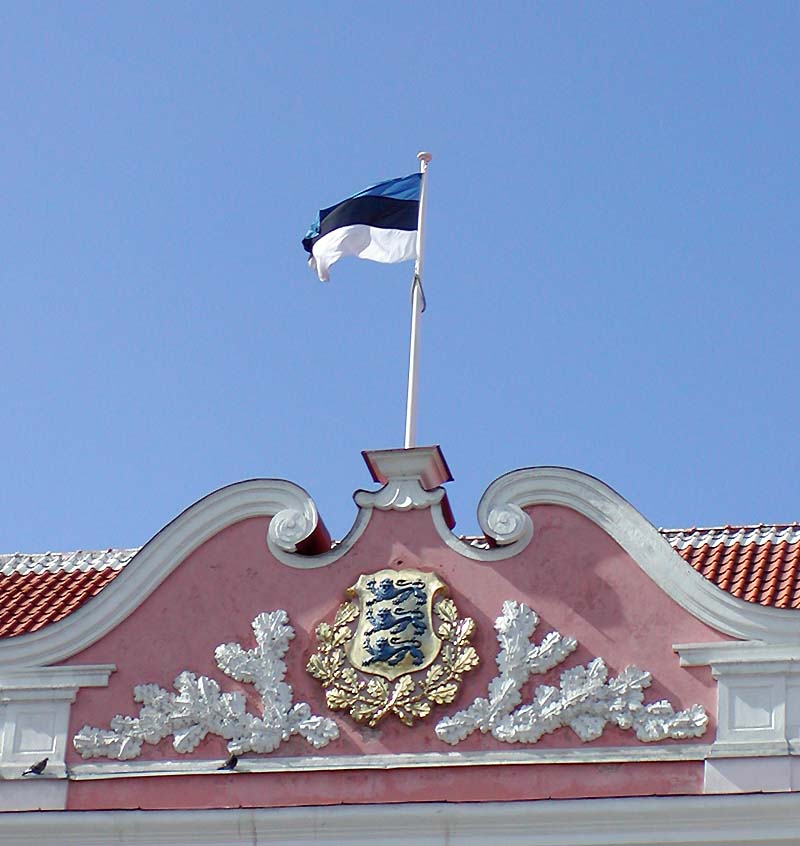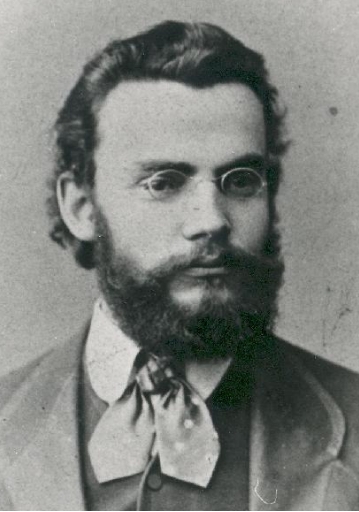|
Mu Isamaa, Mu õnn Ja Rõõm
"" (; "My Fatherland, My Happiness and Joy") is the national anthem of Estonia. It was adopted as the national anthem () in 1920. The lyrics were written by Johann Voldemar Jannsen and are set to a melody composed in 1848 by Fredrik Pacius, Fredrik (Friedrich) Pacius which is also that of the national anthem of Finland: "Maamme" ( sv, Vårt land, which was the unofficial anthem of the Grand Duchy of Finland). The only differences between the two anthems are their key signature and the repetition of the last four lines of each verse in the Finnish anthem. It is also considered to be an ethnic anthem for Livonian people with text "Min izāmō". History The song was first presented to the public as a choral work in the Grand Song Festival of Estonia in 1869 and quickly became a symbol of the Estonian National Awakening. "Mu isamaa, mu õnn ja rõõm" was officially adopted as the national anthem of Estonia in 1920, after the Estonian War of Independence. In 1944, the Soviet Union ... [...More Info...] [...Related Items...] OR: [Wikipedia] [Google] [Baidu] |
Estonia
Estonia, formally the Republic of Estonia, is a country by the Baltic Sea in Northern Europe. It is bordered to the north by the Gulf of Finland across from Finland, to the west by the sea across from Sweden, to the south by Latvia, and to the east by Lake Peipus and Russia. The territory of Estonia consists of the mainland, the larger islands of Saaremaa and Hiiumaa, and over 2,200 other islands and islets on the eastern coast of the Baltic Sea, covering a total area of . The capital city Tallinn and Tartu are the two largest urban areas of the country. The Estonian language is the autochthonous and the official language of Estonia; it is the first language of the majority of its population, as well as the world's second most spoken Finnic language. The land of what is now modern Estonia has been inhabited by '' Homo sapiens'' since at least 9,000 BC. The medieval indigenous population of Estonia was one of the last " pagan" civilisations in Europe to adopt Ch ... [...More Info...] [...Related Items...] OR: [Wikipedia] [Google] [Baidu] |
Estonian War Of Independence
The Estonian War of Independence ( et, Vabadussõda, literally "Freedom War"), also known as the Estonian Liberation War, was a defensive campaign of the Estonian Army and its allies, most notably the United Kingdom, against the Bolshevik westward offensive of 1918–1919 and the 1919 aggression of the ''Baltische Landeswehr''. The campaign was the struggle of the newly established democratic nation of Estonia for independence in the aftermath of World War I. It resulted in a victory for Estonia and was concluded in the 1920 Treaty of Tartu. Preface In November 1917, upon the disintegration of the Russian Empire, a diet of the Autonomous Governorate of Estonia, the Estonian Provincial Assembly, which had been elected in the spring of that year, proclaimed itself the highest authority in Estonia. Soon thereafter, the Bolsheviks dissolved the Estonian Provincial Assembly and temporarily forced the pro-independence Estonians underground in the capital Tallinn. A few months later, u ... [...More Info...] [...Related Items...] OR: [Wikipedia] [Google] [Baidu] |
National Anthems
Most nation states have an anthem, defined as "a song, as of praise, devotion, or patriotism"; most anthems are either marches or hymns in style. A song or hymn can become a national anthem under the state's constitution, by a law enacted by its legislature, or simply by tradition. A royal anthem is a patriotic song similar to a national anthem, but it specifically praises or prays for a monarch or royal dynasty. Such anthems are usually performed at public appearances by the monarch or during other events of royal importance. Some states use their royal anthem as the national anthem, such as the state anthem of Jordan. There are multiple claimants to the position of oldest national anthem. Among the national anthems, the first to be composed was the Dutch national anthem, the "Wilhelmus", which was written between 1568 and 1572. This has both Dutch and English language versions and is unusual in being an acrostic in both languages. The Japanese anthem, "Kimigayo", employs the ... [...More Info...] [...Related Items...] OR: [Wikipedia] [Google] [Baidu] |
Estonian Patriotic Songs
Estonian may refer to: * Something of, from, or related to Estonia, a country in the Baltic region in northern Europe * Estonians, people from Estonia, or of Estonian descent * Estonian language * Estonian cuisine * Estonian culture See also * * Estonia (other) * Languages of Estonia * List of Estonians This is a list of notable Estonians. Architects * Andres Alver (born 1953) *Dmitri Bruns (1929–2020) * Karl Burman (1882–1965) * Eugen Habermann (1884–1944) *Georg Hellat (1870–1943) *Otto Pius Hippius (1826–1883) * Erich Jacoby (1885� ... {{Disambiguation Language and nationality disambiguation pages ... [...More Info...] [...Related Items...] OR: [Wikipedia] [Google] [Baidu] |
European Anthems
European, or Europeans, or Europeneans, may refer to: In general * ''European'', an adjective referring to something of, from, or related to Europe ** Ethnic groups in Europe ** Demographics of Europe ** European cuisine, the cuisines of Europe and other Western countries * ''European'', an adjective referring to something of, from, or related to the European Union ** Citizenship of the European Union ** Demographics of the European Union In publishing * ''The European'' (1953 magazine), a far-right cultural and political magazine published 1953–1959 * ''The European'' (newspaper), a British weekly newspaper published 1990–1998 * ''The European'' (2009 magazine), a German magazine first published in September 2009 *''The European Magazine'', a magazine published in London 1782–1826 *''The New European'', a British weekly pop-up newspaper first published in July 2016 Other uses * * Europeans (band), a British post-punk group, from Bristol See also * * * Europe (disambi ... [...More Info...] [...Related Items...] OR: [Wikipedia] [Google] [Baidu] |
National Symbols Of Estonia
The national symbols of Estonia are flags, coat of arms, icons or cultural expressions that are emblematic, representative or otherwise characteristic of Estonia or Estonian culture. Estonian flag The Estonian flag represents the Republic of Estonia. It is a blue-black-white 105x165cm rectangle. History of the flag The blue-black-white flag was first consecrated at Otepää on 4 June 1884, as the flag of the Estonian University Student Association. During the following years the blue-black-white flag became a national symbol. The flag was already used as state flag on 24 February, when Estonia declared independence. The Provisional Government of Estonia adopted a resolution on 21 November 1918, proclaiming the blue-black-white flag the state flag. The Law on State Flag was adopted by the Parliament (Riigikogu) on 27 June 1922. After the forcible annexation of Estonia by the Soviet Union in June, 1940, this flag was banned. The flag was created by Aleksander Mõtus. The color ... [...More Info...] [...Related Items...] OR: [Wikipedia] [Google] [Baidu] |
Estonian Phonology
This article is about the phonology and phonetics of the Estonian language. Vowels There are 9 vowels and 36 diphthongs, 28 of which are native to Estonian. All nine vowels can appear as the first component of a diphthong, but only occur as the second component. A vowel characteristic of Estonian is the unrounded back vowel , which may be close-mid back, close back, or close-mid central. * Vowels can occur in both initial and non-initial syllables. Vowels generally occur in initial syllables; they can occur in non-initial syllables only in compound words, exclamations, proper names and unnaturalized loanwords. * The front vowels are phonetically near-front . * Before and after , the back vowels can be fronted to . * The unrounded vowel transcribed can be realized as close back , close-mid central or close-mid back , depending on the speaker. * The mid vowels are phonetically close-mid . * Word-final is often realized as mid . * The open vowels are phonetically nea ... [...More Info...] [...Related Items...] OR: [Wikipedia] [Google] [Baidu] |
International Phonetic Alphabet
The International Phonetic Alphabet (IPA) is an alphabetic system of phonetic transcription, phonetic notation based primarily on the Latin script. It was devised by the International Phonetic Association in the late 19th century as a standardized representation of speech sounds in written form.International Phonetic Association (IPA), ''Handbook''. The IPA is used by lexicography, lexicographers, foreign language students and teachers, linguistics, linguists, speech–language pathology, speech–language pathologists, singers, actors, constructed language creators, and translators. The IPA is designed to represent those qualities of speech that are part of wiktionary:lexical, lexical (and, to a limited extent, prosodic) sounds in oral language: phone (phonetics), phones, phonemes, Intonation (linguistics), intonation, and the separation of words and syllables. To represent additional qualities of speech—such as tooth wiktionary:gnash, gnashing, lisping, and sounds made wi ... [...More Info...] [...Related Items...] OR: [Wikipedia] [Google] [Baidu] |
Estonian Language
Estonian ( ) is a Finnic language, written in the Latin script. It is the official language of Estonia and one of the official languages of the European Union, spoken natively by about 1.1 million people; 922,000 people in Estonia and 160,000 outside Estonia. Classification Estonian belongs to the Finnic branch of the Uralic language family. The Finnic languages also include Finnish and a few minority languages spoken around the Baltic Sea and in northwestern Russia. Estonian is subclassified as a Southern Finnic language and it is the second-most-spoken language among all the Finnic languages. Alongside Finnish, Hungarian and Maltese, Estonian is one of the four official languages of the European Union that are not of an Indo-European origin. From the typological point of view, Estonian is a predominantly agglutinative language. The loss of word-final sounds is extensive, and this has made its inflectional morphology markedly more fusional, especially with respect to no ... [...More Info...] [...Related Items...] OR: [Wikipedia] [Google] [Baidu] |
Jacques Delors Institute
The Jacques Delors Institute (french: Institut Jacques Delors), which also uses the name ''Notre Europe'' (French for "Our Europe"), is an independent think tank based in Paris. Founded in 1996 by Jacques Delors, it aims to "think a united Europe." Enrico Letta currently serves as president of the Jacques Delors Institute, while Sébastien Maillard is its director. The Institute was ranked 22nd among the 'Top Think Tanks in Western Europe' in the 2019 Global Go To Think Tank Report of the University of Pennsylvania, making it in third place among think tanks based in France. In co-operation with the Hertie School of Governance it has operated a branch in Berlin since 2014, the . In 2019, The Jacques Delors Institute Berlin merged with the Hertie School, forming the new Jacques Delors Centre. Henrik Enderlein, the president of the Hertie School also served as the director of the Jacques Delors Centre. Since 2017, the Jacques Delors Institute also has an Office in Brussels, which ... [...More Info...] [...Related Items...] OR: [Wikipedia] [Google] [Baidu] |
Estonian National Awakening
The Estonian Age of Awakening ( et, Ärkamisaeg) is a period in history where Estonians came to acknowledge themselves as a nation deserving the right to govern themselves. This period is considered to begin in the 1850s with greater rights being granted to commoners and to end with the declaration of the Republic of Estonia in 1918. The term is sometimes also applied to the period around 1987 and 1988. History Although Estonian national consciousness spread in the course of the 19th century, some degree of ethnic awareness in the literate middle class preceded this development.Raun, Toivo U. (2003)"Nineteenth- and early twentieth-century Estonian nationalism revisited". '' Nations and Nationalism'' 9.1, 129–147. By the 18th century the self-denomination ''eestlane'' (Estonian) along with the older ''maarahvas'' (country folk) spread among Estonians in the then provinces of Estonia and Livonia of the Russian Empire. The Bible was translated in 1739, and the number of book ... [...More Info...] [...Related Items...] OR: [Wikipedia] [Google] [Baidu] |
.jpg)


